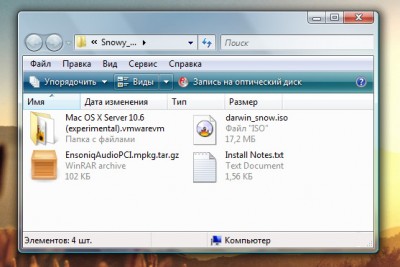
#Mac os x for vmware 6.5 update#
Currently, there is no automatic Tools update for these guests.
#Mac os x for vmware 6.5 mac os#
Important note for guests other than Windows and Linux: Solaris, FreeBSD, and Mac OS - VM Tools can only be updated using the manual interactive method. In the latter case, administrators also have the option of suppressing any potential reboots on Windows VMs – this is a good option that enables coordination of reboots required after routine guest OS patching. This can be done interactively or in a completely hands-off fashion. In the vSphere Web Client, when a VM indicates that VM Tools are outdated, the adjacent button can be used to automatically initiate an update. Initiate update to one or more VMs through the vSphere UI This is an edge case, but one to keep in mind.Ģ. After scrambling to get applications back online, administrators could find themselves facing unanticipated subsequent reboots if a VM Tools update happened to be available. Imagine a scenario where VMs are rebooting unexpectedly due to a widespread infrastructure outage.

This approach may be viable for less-critical workloads, such as labs or test/dev environments. In many cases, this will result in one additional reboot after the VM Tools installation completes. Upon VM reboot, such as after installing guest OS patches, the VM Tools status will be checked and updated when necessary. The easiest way to keep VM Tools up to date is to check a box and forget about managing this element of infrastructure. The VM Tools Linux packages – OVT and OSP – are not managed via vSphere, so they can only be installed and updated from within each guest OS using native package management tools. The following applies only to Windows and Linux guests using VM Tools ISOs except where noted. There are several ways to initiate VM Tools updates from vSphere or from within a guest.
#Mac os x for vmware 6.5 plus#
This explains why a VM may suddenly complain about having outdated VM Tools after migrating from one host to another – it is because the destination host has a more recent version in the product locker.Ī previous article explains why there are three types of VM Tools: the familiar Tools ISOs for all supported operating systems, plus two additional offerings in the form of binary packages for Linux. Note that there is no mechanism for VMs running on vSphere to contact the mother ship and learn about new versions of VM Tools – only the VM-to-host relationship is relevant. If the host has a newer version, the VM is considered out of date. In vSphere 6.0 and prior this check is performed when certain virtual machine events occur, such as power-on or vMotion. In vSphere 6.5, the version of VM Tools running on each guest is compared to the version associated with the underlying ESXi host on a periodic schedule. As demonstrated below, two different versions of Tools are considered “Current” because the underlying hosts are not identical. The VM Tools status for any given VM is always in the context of the underlying host.

For more information about setting up a shared Tools repository, see this earlier post or KB 2004018.

The target can be either local to each host or point to a centralized repository of VM Tools on a shared datastore.

VMware Tools Status is Relative to Underlying HostĮach ESXi host has a storage location for VM Tools installers, which is a configurable option and visibly referenced by the /productLocker symlink. A previous article provides an overview of the three types of VM Tools. These different techniques allow optimizing either for automation and standardization or for separation of responsibilities. Walkthrough: Updating Tools in a vSphere Environmentįor keeping VMware Tools up to date, there are six different approaches that vSphere administrators can use to accommodate nearly any workflow required for flexible datacenter operations.


 0 kommentar(er)
0 kommentar(er)
